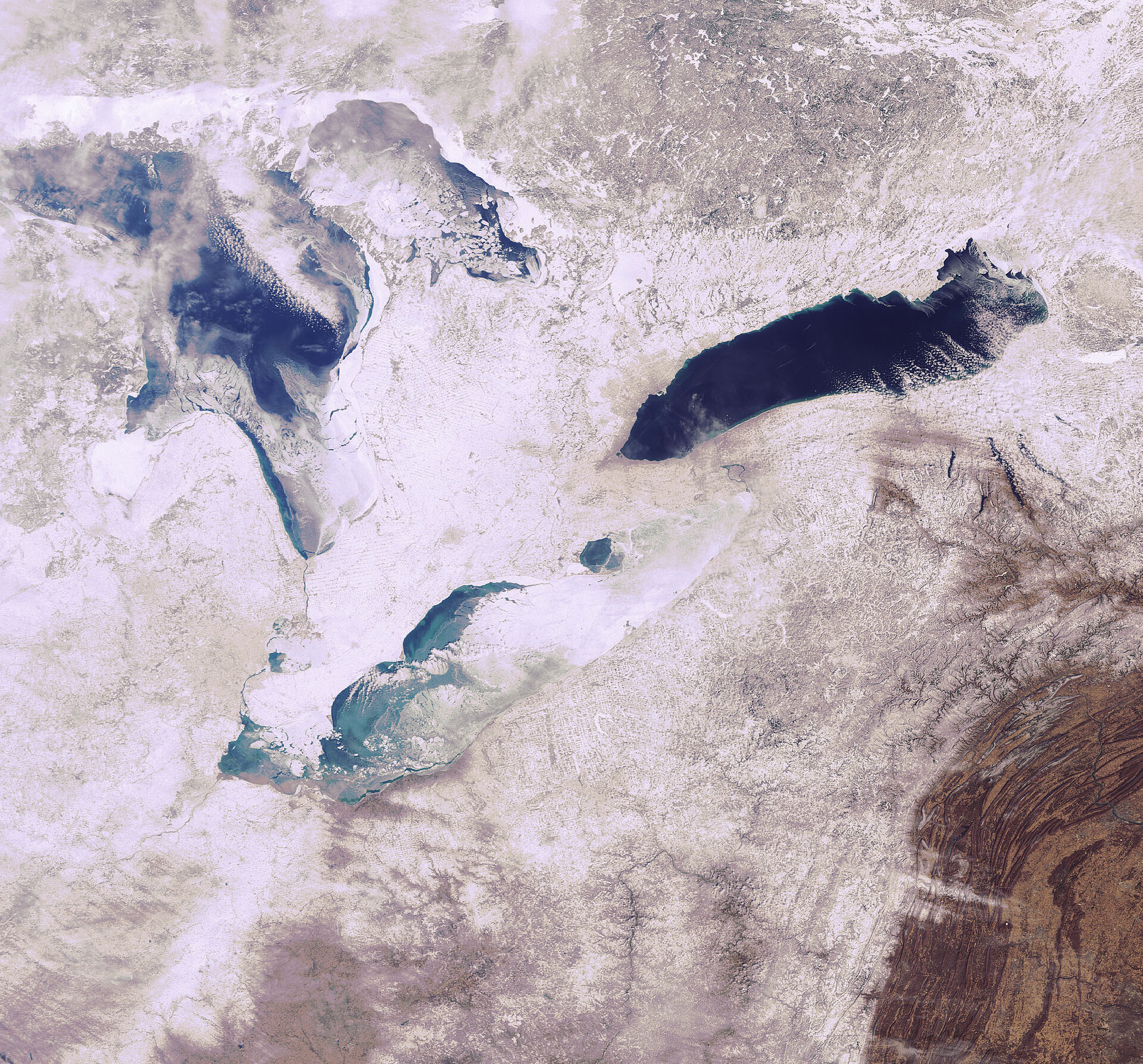Earth from Space: Gifts of the glaciers
This Envisat image highlights three of the five Great Lakes of North America. Lakes Huron (left) and Erie (bottom) are partially ice-covered following snow storms in Michigan and Cleveland, while Lake Ontario (right) is completely visible in blue.
The Great Lakes are said to be ‘gifts of the glaciers’ because of the way they were formed. About 100 000 years ago, the last major glacier called Laurentide (nearly 4 m thick) formed over most of Canada and part of the US.
As Laurentide formed, giant ice sheets flowed into the land carving out valleys and levelling mountains. Some 14 000 years ago warmer temperatures began to melt Laurentide. As it began to retreat, the resulting meltwater filled the huge holes left by the glaciers.
Covering a total area of 244 000 km² and containing about 23 000 km³ of water, together the Great Lakes form the largest connected area of fresh, surface water on Earth – roughly 18% of the world supply. The only place where more fresh water is contained is in the polar ice caps.
They have played an important role in North America's economic development by providing a transportation system between the agricultural and mining regions on the western shores with the market centres on the East Coast. The ability to ship materials such as coal, iron and ore also gave rise to the steel and automobile industries in the area.
The dark blue lines beneath Lake Ontario are some of the Finger Lakes in Upstate New York. These eleven lakes began as rivers running northward that were overrun by glaciers moving southward some 2 million years ago. Cayuga Lake (far right) is the longest, while Seneca Lake to its west is the deepest and largest in total area.
A part of the Appalachian Mountains is visible in the bottom left. The Appalachians stretch some 2400 km through eastern North America from the state of Alabama in the US to the province of Quebec in Canada.
This image was acquired by Envisat's Medium Resolution Imaging Spectrometer (MERIS) instrument on 22 February 2009, working in Full Resolution mode to provide a spatial resolution of 300 metres.






